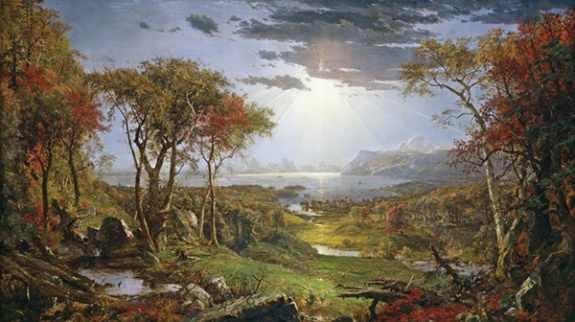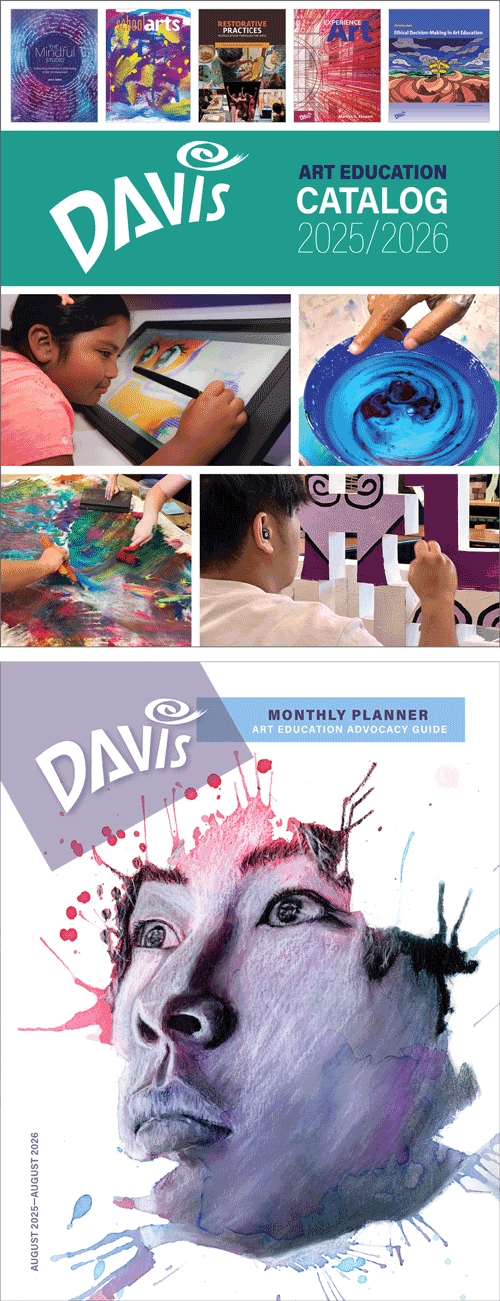Artist Birthday: Jasper Cropsey
This large-scale painting was executed from memory while Cropsey was in London. It is sometimes considered one of the last great works of a school of painting that fell into decline after the Civil War. It depicts a view towards the southeast on the Hudson towards Storm King Mountain. Like many of the Hudson River artists, it is a combination of extreme detail with a sweeping vista. Another trait of the school is the view of wilderness in the foreground with middle and background showing humankind’s co-existence with nature. Unlike the work of Cole and more romantic artists of the movement, Cropsey’s work shows a peaceful coexistence between humankind and nature.
Artist birthday for February 18th: Jasper Cropsey (1823–1900, United States)
A painter of the Hudson River School of landscape artists, Cropsey’s late work became increasingly Luminist in style.
 |
| Jasper Cropsey, Autumn on the Hudson River, 1860. Oil on canvas, 59 ¾" x 108 ¼" (151.8 x 274.9 cm) © 2025 National Gallery of Art, Washington, DC. (NGA-P0506) |
Because British patrons rarely saw autumnal colors like those in New England, Cropsey became famous in England for his autumn landscapes. The emphasis on the atmospheric effects of light in the sky and on the water is a late manifestation in the Hudson River School. Works like this are sometimes considered precursors to Impressionism. The style is sometimes called Luminism, because unlike Impressionism, the painting was executed in the studio rather than outdoors. When this painting was exhibited, the brilliant colors of the trees caused a sensation among British viewers. Cropsey displayed specimens of New England foliage alongside the painting to show the botanical accuracy of the painting.
There was virtually no tradition of landscape painting during the 1700s in America, save for overmantle decoration (a painted woodland scene above a fireplace, usually on the wall), and as backgrounds in portraits. In the early 1800s, after the Revolution (1775–1783), Americans, and Europeans alike came to appreciate the unique and spectacular nature of the American wilderness. Before 1825 in American painting, landscapes were rare, and lacked a thematic focus. After 1825 saw the flowering of the landscape as subject matter in American painting.
As Americans cleared the wilderness and tilled it for farms, constructed canals to increase commerce, and exploited the land for growing industrialization, Americans became nostalgic for what they knew they were slowly losing -- their unique wilderness. Authors and artists began to create romantic reminiscences of the American landscape before the Industrial Revolution.
The movement now called the Hudson River School came to embody the ideals sought by Americans in views of their country. It is so named because many of the artists did landscapes up and down the length of the Hudson River in New York. It was these scenes that formed the kernel for the flowering of American landscape paintings. Many of these artists also did landscapes all over New England and New York. In the 1860s, the urge to present the grandeur and awesome beauty of the newly opened western territories led many of the Hudson River School artists to go to the West.
As a child, Jasper Cropsey taught himself to draw, making sketches of landscapes and architecture. In 1837, at fourteen, he won a diploma for a model house that he designed and built. That same year he entered into an apprenticeship with an architectural firm in New York. He was so proficient in drawing that he eventually was responsible for all of the finished renderings of the firm’s projects. Impressed with Cropsey’s talents, his employer provided him with a studio and art supplies to perfect his painting. He took further lessons in painting at the National Academy of Design.
After leaving the architecture firm in 1842, while supporting himself with architecture design commissions, Cropsey began making studies from nature. He was very drawn to the landscapes of Thomas Cole, and believed, as Cole did, that detailed landscapes of America were metaphors for the divine. He believed, in contrast to Cole, that landscape was the most noble form of subject matter. The first painting he exhibited at the National Academy of Design entitled “Italian Composition” was probably based on a print. It was well received and he was elected an associate member of the academy in the following year.
Between 1847 and 1849 and again between 1856 and 1863 Cropsey visited Europe, traveling to England, France and Italy. He was particularly drawn to the works of Turner and Constable, and made studies of English landscapes. He supported himself by selling American landscapes to British patrons. Between the two trips he took a studio in New York and spent summers in upper New York state, New Hampshire and Vermont creating studies for future paintings. It was during this period that he was the most successful with his highly detailed scenes of New England and the Hudson River valley.
After the Civil War (1860–1865) Cropsey’s paintings fell out of favor. American patrons found the grandiose, romantic views of American scenery out of step with the times, preferring smaller, softer edged, atmospheric, mood-evoking landscapes by Barbizon-influenced artists such as George Inness (1825–1894). Cropsey spent his remaining years producing watercolor landscapes of the area around his home in Hastings-on-Hudson.

Comments